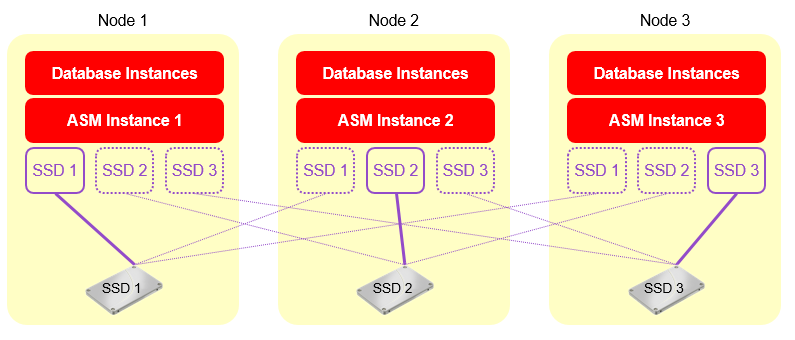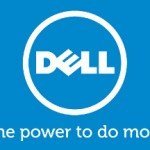FlashGrid is a new company founded in 2015 by some industry veterans (coming from Veritas, Intel, EMC, HGST, VMware, IBM). Founder and CEO Alex Miroshnichenko was CTO at Visto (acquired by VMware to build project Fargo, used in the new Virtual SAN 6.x, in new linked clone for VDI, but also in new containers based services). Really a lot of expertise from different storage related companies.
During the last IT Press Tour #17 I’ve got the opportunity to learn more about this company (new for me) and their unique solution.
They have an hyper-converged storage infrastructure target for Oracle ASM and RAC environment, or using other terms, an open storage designed for Oracle clusters.
So FlashGrid provide a shared storage to Oracle ASM using local storage (DAS) from each node using NVMe SSD. Using Oracle features (Oracle ASM) data can be protected across the cluster (note that FlashGrid does not provide directly a data protection solution) making it also reliable by providing high availability and data mirroring (can be implemented in a 2-way or 3-way mirror).
The solution can scale from 0.4 to 50 TB per node and from 2 to 100 nodes!
Also, to maximize database performance there is FlashGrid Read-Local™ Technology to manages SSD devices and connections and use local connection as possible:
Of course, like in each hyper-converged solution, networking could be really important, but RDMA networks can be used (also at 100 Gbps) in order to moves data without consuming CPU cycles.
Note that the user case is quite specific, but it’s also possible have something more generic: by using the Oracle ASM Cluster File System (ACFS) it’s possible build a scale-out NFS filer cluster.
Interesting is also the licensing model:
- Current: Commercial free to use, paid support subscription
- Paid: large enterprise functionality.
Current version is 15.9, and there is also beta version 15.12: the product is partially open source and part proprierty.
Note that, as explained in the compatibility matrix, it support both Oracle database 11.2 and 12.1, but only operating systems Oracle Linux 7, RHEL 7. So more for new Oracle deployment or for people that are investing in a new platform migration.
Disclaimer: Condor Consulting Group has invited me to this even and they will paid for accommodation and travels, but I am not compensated for my time and I’m not obliged to blog. Furthermore, the content is not reviewed, approved or published by any other person than me.














